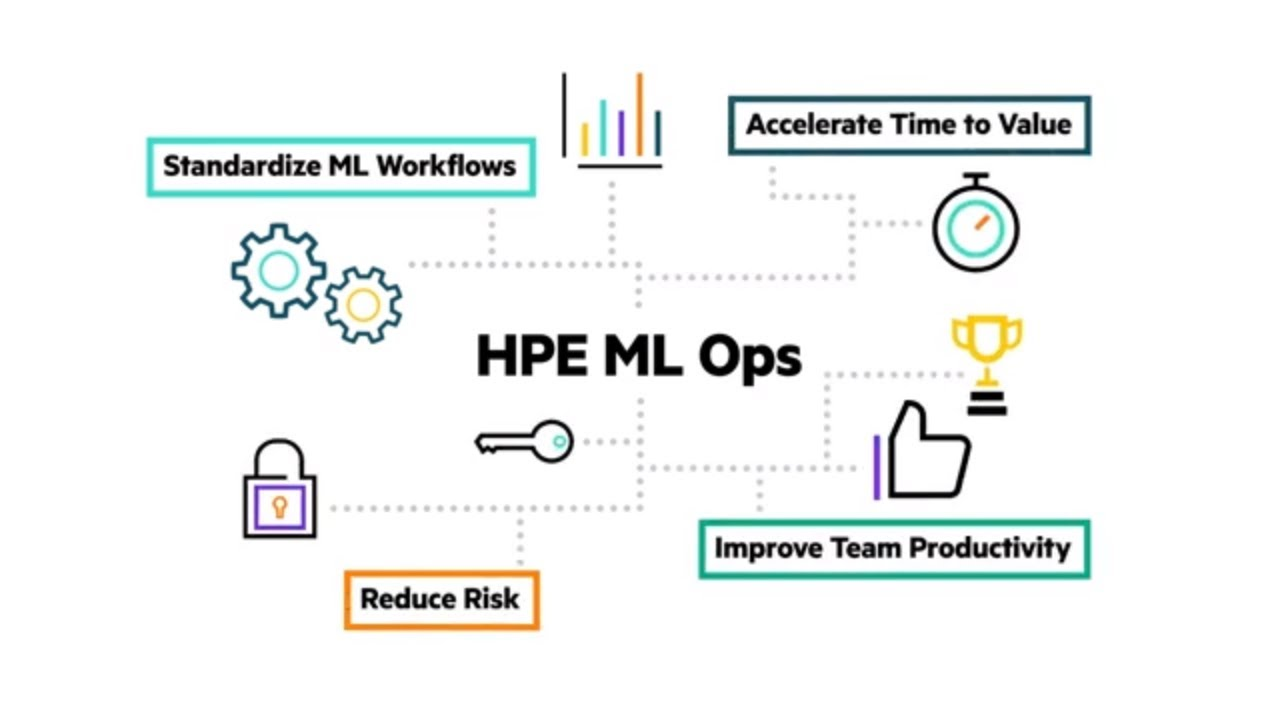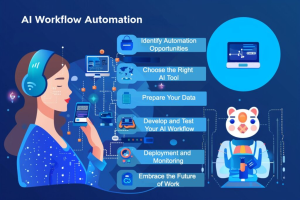Explore how Enterprise MLOps Solutions enable organizations to deploy, manage, and scale AI at enterprise scale. Learn about architecture, automation, governance, and strategic ROI for AI-first enterprises.

Introduction: Strategic Imperative of Enterprise MLOps Solutions
Enterprise MLOps Solutions are essential for operationalizing AI at scale. They bridge the gap between model development and production deployment, standardize pipelines, enforce governance, and enable continuous monitoring. This transforms AI from isolated experiments into enterprise-grade capabilities that drive faster decision-making, scalability, and competitive advantage.
-
Introduction: Strategic Imperative of Enterprise MLOps Solutions
-
Architecture of Enterprise MLOps Solutions
-
Model Lifecycle Management at Scale
-
Data Pipelines, Feature Stores, and Reproducibility
-
Integration with Cloud, Hybrid, and AI-First Architectures
-
Real-Time Inference, Edge Deployment, and Intelligent Automation
-
Governance, Compliance, and Ethical Considerations
-
Business Value and ROI of Enterprise MLOps
-
Industry Use Cases Across Sectors
-
Emerging Trends in Enterprise MLOps
-
Future Outlook: Adaptive, Autonomous, and Continuous AI
-
Conclusion: Enterprise MLOps as the Operating System of AI
In the era of data-driven business transformation, artificial intelligence is no longer a niche experiment—it is the backbone of enterprise innovation, decision intelligence, and competitive advantage. Yet, the promise of AI is only as good as its operationalization. Enter Enterprise MLOps Solutions: the strategic framework that enables organizations to deploy, manage, and scale machine learning models with enterprise-grade reliability, governance, and agility.
Modern enterprises no longer measure AI success by isolated models; they measure it by the velocity of deployment, the accuracy of predictions, and the resilience of their AI-driven operations. MLOps, or Machine Learning Operations, provides the blueprint for turning data science initiatives into repeatable, scalable, and strategically aligned business outcomes.
This article explores the architecture, business value, implementation strategies, and emerging trends of Enterprise MLOps, providing a luxurious, executive-focused perspective suitable for leaders steering AI-first enterprises.
1. The Strategic Imperative of MLOps
Enterprises today face an AI paradox: the potential for massive impact is often hampered by operational complexity. Models built by data science teams frequently remain siloed, underutilized, or inconsistent, leading to stalled AI initiatives.
Enterprise MLOps Solutions address this challenge by bridging the gap between model development and production deployment. By standardizing pipelines, enforcing governance, and enabling continuous monitoring, MLOps transforms AI from a set of experiments into a core operational capability.
From a strategic perspective, MLOps enables:
- Faster time-to-market for AI-driven products
- Consistent, repeatable model deployment across geographies and business units
- Reduced risk through automated monitoring and governance
- Scalable AI adoption, unlocking enterprise-wide insights
Enterprises adopting MLOps are not just deploying models—they are operationalizing intelligence as a strategic asset, enabling data-driven decision-making across every layer of the organization.
2. Architecture of Enterprise MLOps Solutions

A robust MLOps architecture is a confluence of people, processes, and platforms. It encompasses:
- Model Development Layer: Data scientists and ML engineers build and experiment with models using frameworks like TensorFlow, PyTorch, or scikit-learn.
- Pipeline Orchestration Layer: Tools like Kubeflow, MLflow, or Apache Airflow automate model training, evaluation, and deployment pipelines.
- Model Registry & Lifecycle Layer: Centralized repositories ensure versioning, metadata management, and reproducibility.
- Deployment & Serving Layer: Supports batch, real-time, and edge inference, leveraging cloud-native services, containers, and microservices.
- Monitoring & Feedback Layer: Continuous tracking of model performance, drift detection, and automated retraining loops.
This multi-layered architecture ensures resilience, scalability, and governance, while allowing enterprises to adapt rapidly to evolving data, business conditions, and regulatory requirements.
3. Model Lifecycle Management at Scale
At the heart of Enterprise MLOps lies Model Lifecycle Management (MLLM). Managing the lifecycle of hundreds or thousands of models requires a systematic approach:
- Version Control: Tracking every iteration of data, features, and model weights.
- Experiment Tracking: Recording hyperparameters, datasets, and evaluation metrics.
- Automated Testing & Validation: Ensuring models meet business, technical, and compliance standards before deployment.
- Deployment Strategies: Blue-green, canary, and shadow deployments minimize risk during production rollouts.
- Continuous Learning: Automated pipelines enable retraining in response to drift, new data, or evolving business objectives.
MLLM ensures operational excellence, reducing downtime and maximizing the value of AI investments.
4. Data Pipelines, Feature Stores, and Reproducibility
Data is the foundation of AI, and enterprise-grade MLOps relies on structured, scalable, and reproducible data pipelines.
- Feature Stores: Centralized repositories for validated, reusable features accelerate model development and maintain consistency across teams.
- ETL & Data Orchestration: Automated pipelines handle extraction, transformation, and loading from diverse sources, ensuring data integrity and compliance.
- Reproducibility: Every model should be traceable back to the exact version of datasets and code, ensuring auditability and regulatory adherence.
By engineering robust pipelines, enterprises create a trusted data backbone that powers all AI initiatives.
5. Integration with Cloud, Hybrid, and AI-First Architectures
Modern MLOps solutions thrive on cloud-native, hybrid, and AI-first enterprise architectures:
- Cloud Platforms: AWS SageMaker, Azure ML, and Google Vertex AI enable elastic compute, seamless deployment, and integrated monitoring.
- Hybrid Deployments: Enterprises often maintain on-premises data for compliance or latency reasons while leveraging cloud scalability.
- AI-First Architecture: MLOps integrates deeply with core enterprise systems—ERPs, CRMs, IoT networks—transforming intelligence into operational workflows.
This integration ensures AI becomes a pervasive capability rather than an isolated function.
6. Real-Time Inference, Edge Deployment, and Intelligent Automation
Intelligent enterprises demand real-time insights:
- Edge AI: Deploy models closer to sensors, machines, or end-users for low-latency, autonomous decision-making.
- Intelligent Automation: MLOps pipelines can trigger actions—inventory replenishment, predictive maintenance, or fraud alerts—without human intervention.
- Hybrid Inference: Combining cloud and edge ensures scalability while maintaining operational efficiency.
By unifying AI with operational systems, MLOps transforms enterprises into intelligent, adaptive ecosystems.
7. Governance, Compliance, and Ethical Considerations
Operationalizing AI at scale introduces risk, accountability, and ethical responsibility. Enterprise MLOps frameworks incorporate governance at every stage:
- Explainability: Understanding model decisions builds trust with stakeholders and regulators.
- Bias Mitigation: Continuous monitoring ensures fairness across demographics and processes.
- Compliance: Alignment with GDPR, HIPAA, and emerging AI regulations protects the enterprise from legal risk.
- Auditability: Every pipeline, data source, and model version is traceable for enterprise and regulatory reporting.
Ethical AI is no longer optional—it is a strategic differentiator that builds credibility and long-term value.
8. Business Value and ROI of Enterprise MLOps
Enterprises adopting MLOps realize tangible business benefits:
- Accelerated AI Deployment: Reduced model deployment time from months to weeks.
- Operational Efficiency: Automated pipelines lower operational costs and minimize manual intervention.
- Improved Decision Intelligence: Real-time insights drive faster, data-backed decisions.
- Revenue Growth: Predictive models optimize pricing, marketing, and customer retention.
- Risk Reduction: Continuous monitoring detects anomalies and model drift before impacting operations.
MLOps is no longer just a technical initiative—it is a strategic lever for enterprise transformation.
9. Industry Use Cases Across Sectors
Finance: Predictive credit scoring, fraud detection, and algorithmic trading rely on MLOps to deploy real-time, compliant, and explainable models.
Healthcare: Diagnostic AI, patient monitoring, and resource optimization benefit from MLOps pipelines that ensure reproducibility, privacy, and reliability.
Manufacturing: Predictive maintenance, quality inspection, and supply chain optimization rely on real-time edge deployments and continuous model updates.
Logistics: Route optimization, demand forecasting, and autonomous warehouse robotics leverage MLOps for dynamic, data-driven decisions.
Enterprise IT: Intelligent IT operations (AIOps), cybersecurity anomaly detection, and capacity planning require scalable model orchestration.
These use cases illustrate how MLOps operationalizes intelligence across the enterprise, driving measurable ROI and strategic impact.
10. Emerging Trends in Enterprise MLOps
- Autonomous Pipelines: AI-driven systems detect drift, retrain models, and redeploy autonomously.
- Meta-Learning & AutoML: Automated model discovery accelerates experimentation.
- Adaptive Feature Engineering: Dynamic selection of features based on operational context.
- Hybrid Cloud & Edge Intelligence: Seamless orchestration between cloud and edge for mission-critical applications.
- Decision Intelligence Integration: MLOps pipelines become part of broader AI-driven decision ecosystems, feeding executive dashboards and automated workflows.
These trends point toward a future where MLOps becomes the operating system of the AI-first enterprise.
11. Future Outlook: Adaptive, Autonomous, and Continuous AI

The evolution of MLOps is moving enterprises toward:
- Adaptive AI Ecosystems: Models that self-optimize based on feedback loops and operational conditions.
- Autonomous Enterprise Systems: Decision-making augmented by AI across strategy, operations, and logistics.
- Continuous Learning Enterprises: Knowledge accumulation, retraining, and improvement embedded into operational DNA.
Enterprises that master MLOps will not merely implement AI—they will embed intelligence at the core of their operations, achieving agility, innovation, and sustained competitive advantage.
Conclusion
Enterprise MLOps Solutions are the cornerstone of AI operationalization. They transform machine learning from isolated experiments into enterprise-scale capabilities, unlocking strategic value, operational efficiency, and actionable insights.
By integrating architecture, governance, automation, and continuous learning, enterprises create intelligent, adaptive, and resilient systems capable of driving predictive operations, optimized decision-making, and innovation at scale.
The future of AI is not just smart—it is operational, autonomous, and enterprise-wide. MLOps ensures that every model, every pipeline, and every insight contributes to an organization’s strategic growth, ethical responsibility, and competitive differentiation.
For CTOs, CIOs, and enterprise leaders, investing in MLOps is not optional—it is imperative. It is the infrastructure, strategy, and philosophy that enables AI to move from vision to reality.
Enterprise MLOps is not just a technology stack—it is the operating system for the AI-first enterprise.


